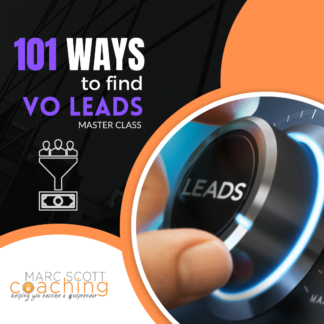No topic is more heavily discussed and debated in the voice over business than rates. Trying to settle on an “industry standard” seems to be almost impossible. There are plenty of rate guides out there, but most of them don’t jive with each other. Some of them are low. Some seem reasonable. Many are incomplete, in that they offer suggestions for staples such as commercials, but little else.
Enter the GVAA… Global Voice Acting Academy.
They recently released what I’d consider to be the most comprehensive rate guide our industry has ever seen. To find out a little bit more about it, I reached out to them directly for an interview. I’ll be sharing their responses over two blog posts. The first half of the interview is below. The second half will be posted Wednesday June 8, 2016.
Talking Voice Over Rates With The GVAA
Marc: For those unfamiliar with GVAA, give us the “elevator pitch” so to speak, on the organization, what you do and what you’re about it.
GVAA: The Global Voice Acting Academy is an online voiceover school providing career building, high quality education for professional and aspiring voice over talent, all within a caring, active, and creative community.
Central to our philosophy is a collaborative “team teaching” method that allows for the most expert, well-informed, learning environment possible. All of our coaches communicate regularly with one another, allowing us to both keep each other informed about a voice actor’s progress, and at the same time, work in partnership on demo production, home studio creation, and business strategies.
A talent can easily study different genres within the GVAA, work on a demo, create a branding and marketing plan, or optimize their home studio, all while experiencing the same personalized, community-based service.
We have a lively Facebook group, weekly workouts, and daily discussions – all via webcam, so that students and pros alike can come together and share their knowledge and experience with like-minded spirits.
Marc: The Rate Guide you’ve created is brilliant. Why did GVAA decide to take on such a monumental project?
GVAA: It started when I (David Toback) had trouble pricing a project I had secured via my own marketing. Almost everything I had auditioned for either through my agent or P2P I was “told” what the rate or rate range was. When it came time to price a project for myself I realized I didn’t have a “price list/rate card” to refer to in order to make sure I was quoting a fair rate for both myself and client.
At the time I was a GVAA student and I had struck up a relationship with Cristina (Milizia) and she became my mentor. I asked her for help regarding rates and ironically she had been looking into fair rates and developing standards. She sent me some information and I created a “rate sheet” for myself. I shared it with Cristina and she saw the opportunity to expand on it and create a rate guide that could be a resource for the industry.
From there it exploded with the help of many pro’s in the industry contributing rates and practices. We quickly realized that this was something that was needed in the industry and our goal was to help standardize rates and ensure all talent levels would know how to price projects in this ever changing industry.
Marc: How many people did you survey to come up with the rates in the guide? What level of experience did they have?
GVAA: We originally started with the Sean Caldwell survey, SAG-AFTRA scale, and a handful of established pro’s Cristina knew from the VO Collective including Jay Preston. From there, we solicited and received rate information from a host of working professionals from around the country through our networks and personal connections. We purposefully reached out to working professionals that specialize in certain genres that are well known in the industry with years of experience working with their own rates.
Marc: For some talent, particularly those starting out, they question if they’re worth the same rates as more experienced VO’s. What do you say to them? Does the number of years of experience matter? Or is the main factor whether or not they can deliver the goods?
GVAA: We say, if you are getting paid for your voice you are a professional and you should command professional rates. I think there’s an issue in our industry where new comers and beginning talent don’t think they’re good enough and should charge less. In fact, I was one of these people.
The fact is, professionals want to work with other professionals. By lacking the confidence in your talent and capabilities and thinking you’re not worth a good rate, it only does a disservice to yourself and can appear as you’re not viable professional.
However, we understand that there is a difference between a newer talent and someone who has been a full time working professional for years. This is why we’ve included a rate range – Low, Avg, High – with the intent that talent can use this range to charge what they feel is right to secure the work.
Talent have the knowledge of what a fair rate should be from the Low to High end and can decide what type of pricing model works best for them at the current stage of their careers. This can also be a factor when quoting for a large company who would have a larger budget as compared to a small company that has a tight budget.
If you are getting paid for your voice you are a professional and you should command professional rates. Tweet This
Part Two on Wednesday
The remainder of my interview with the GVAA will be posted on Wednesday June 8, 2016.
In the meantime, you can check out the GVAA Rate Guide by visiting msvo.me/gvaarates






